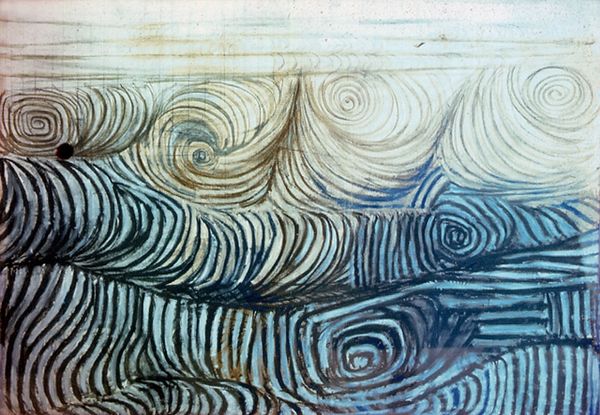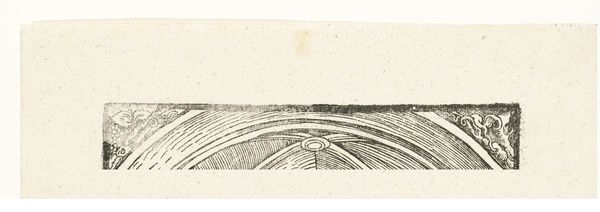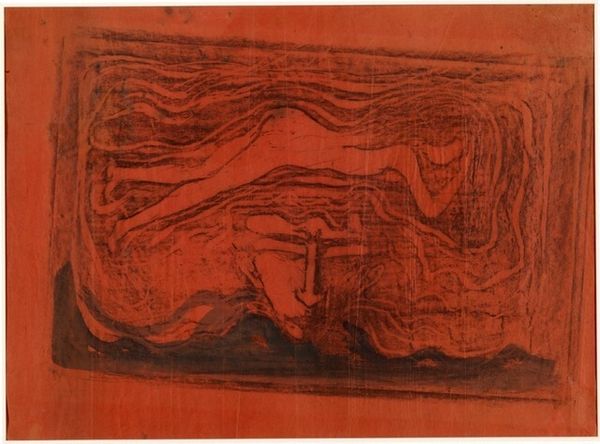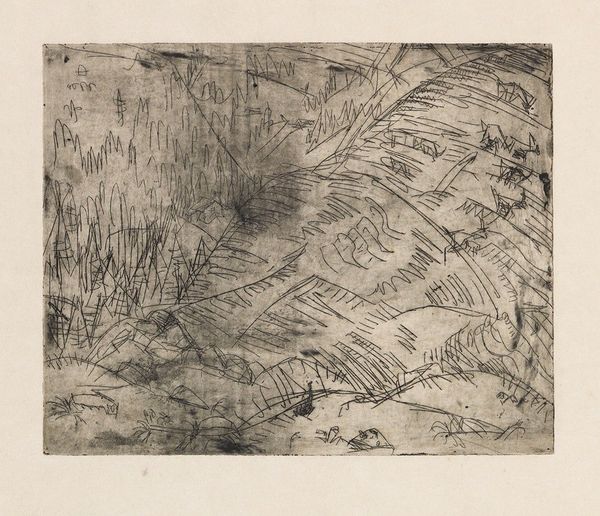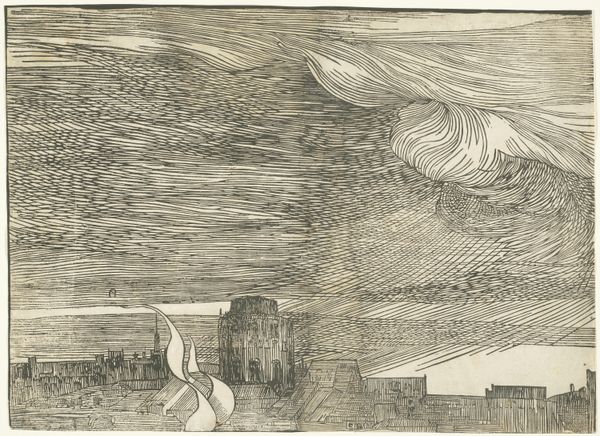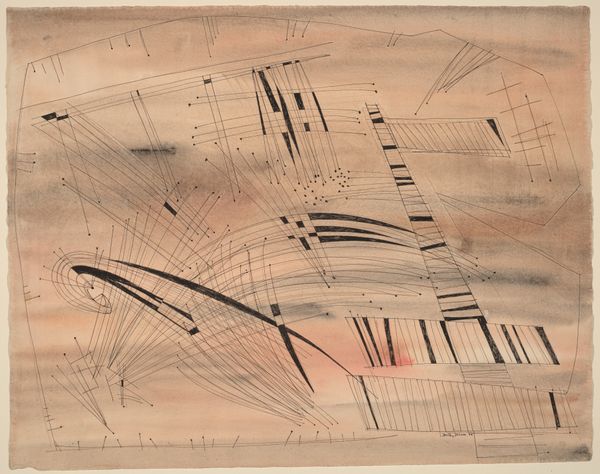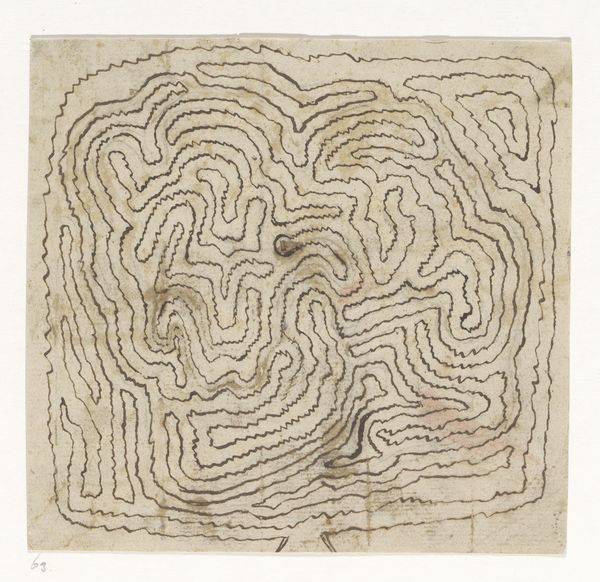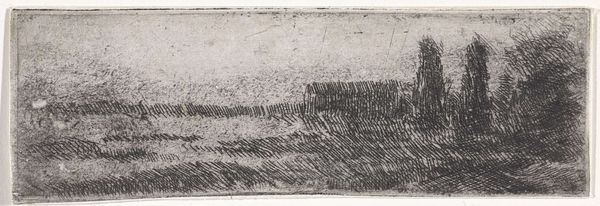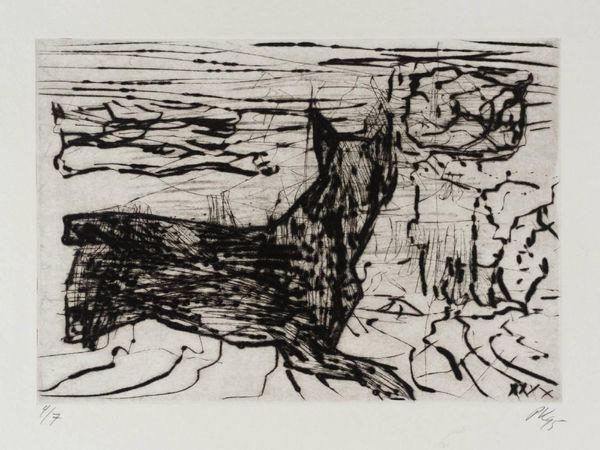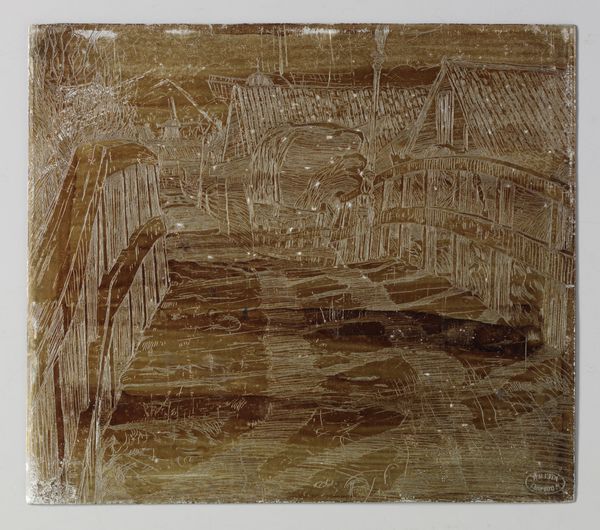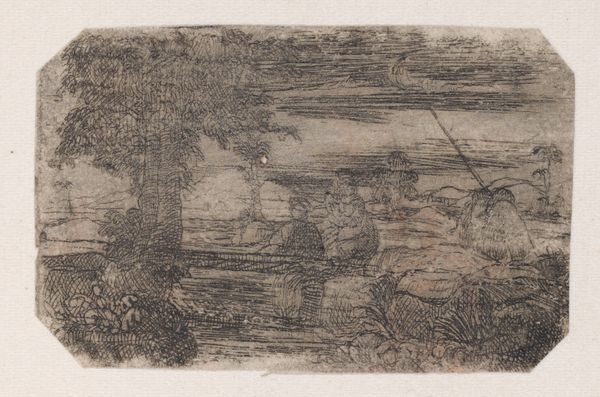
#
pattern
#
line
Copyright: Victor Pasmore,Fair Use
Curator: Victor Pasmore's "The Snowstorm," created in 1950, immediately arrests the eye. Editor: It's captivating! The linear abstraction makes me think of wind patterns visualized in grayscale, somehow both turbulent and ordered. There's an interesting balance here, even tension between what appears representational and the pure abstraction suggested by line and form. Curator: I agree. Looking closely at Pasmore’s piece through a materialist lens, one has to consider the medium itself. These patterns were made from delicate lines laboriously etched, probably by hand, building form in repeated shapes. Consider the role of the hand of the artist here. Editor: It is so intentional and yet creates the idea of snow swirling chaotically. I am curious about how that links to cultural perceptions of snow in 1950's Britain? I am assuming that because of the title there is also the link of class to consider - many homes might not have been able to weather the 'storm', figuratively speaking. Curator: The intersection of those class structures and environmental phenomena is absolutely at play. It's important to acknowledge the limitations on domesticity at the time - something many working class people didn't enjoy as standard. Pasmore offers a view of a world that isn't cosy. This offers up wider sociological concepts relating to inequality. Editor: In doing that, Pasmore transforms potentially familiar forms and processes—weather, homebuilding—into something altogether unfamiliar. By focusing on form rather than traditional materials we have this lovely sense of a domestic place which still manages to abstract away from those traditional forms. This all links in with process, doesn't it? Pasmore asks questions on how the work functions through the making of it. Curator: Absolutely. Bringing social understanding to a physical phenomenon changes perception here. It opens up avenues for interpreting climate itself, too, with the lack of security of many lower income domestic situations. The image stops being a neutral rendering of a snowy environment and instead becomes charged with meaning. Editor: It's truly compelling how the focus on materiality and form amplifies social contexts. That, in turn, enhances a very new relationship with this artwork, taking its original ideas, and turning into something new. I am now asking how this affects my own position of privilege to come across it in a modern context. Curator: By exploring the layered contexts—social and art historical—we see how abstract forms can address complex questions of identity and power structures, giving the art itself further nuance.
Comments
No comments
Be the first to comment and join the conversation on the ultimate creative platform.
